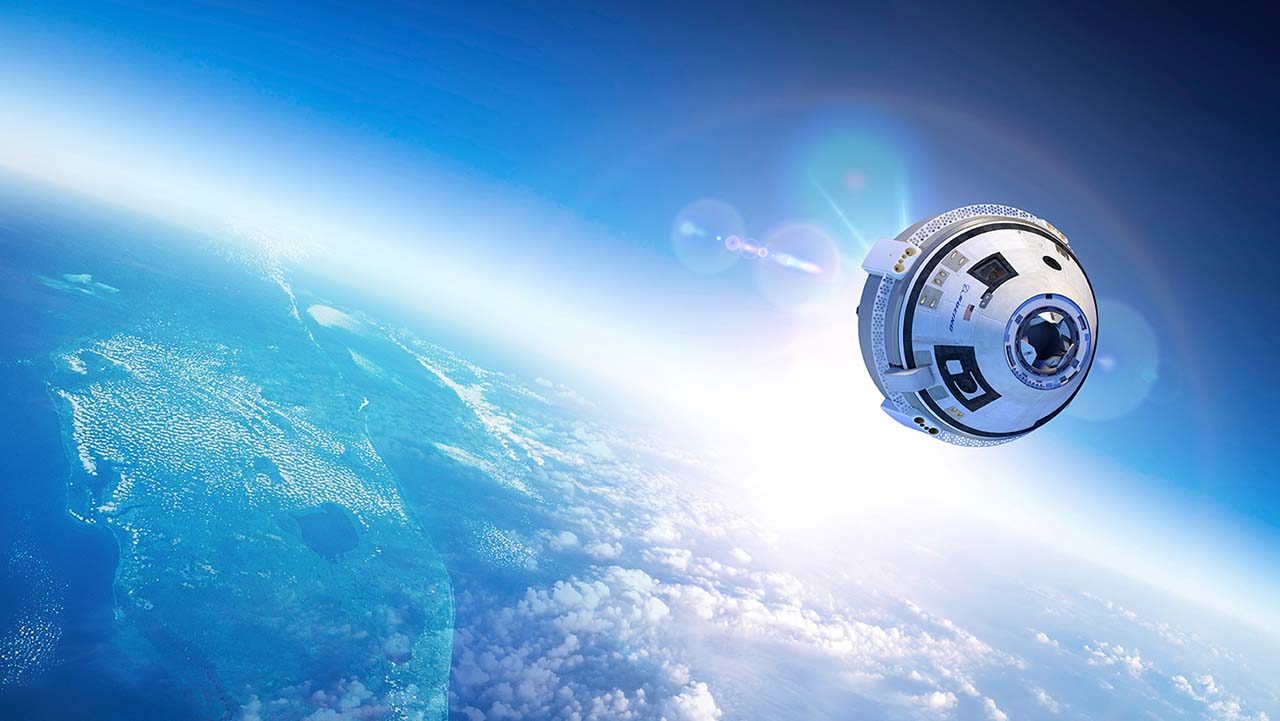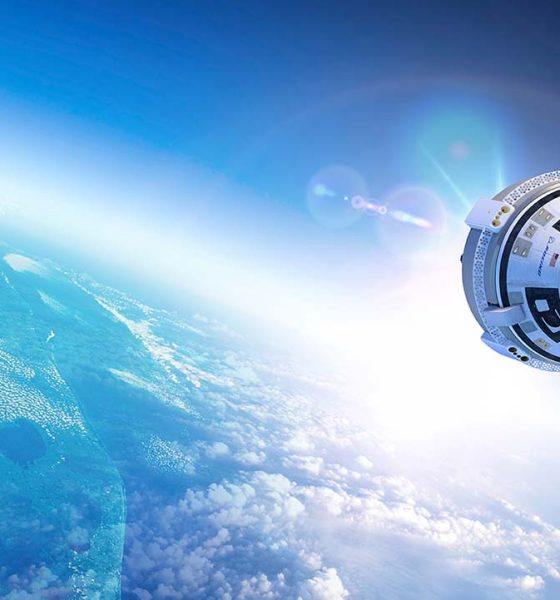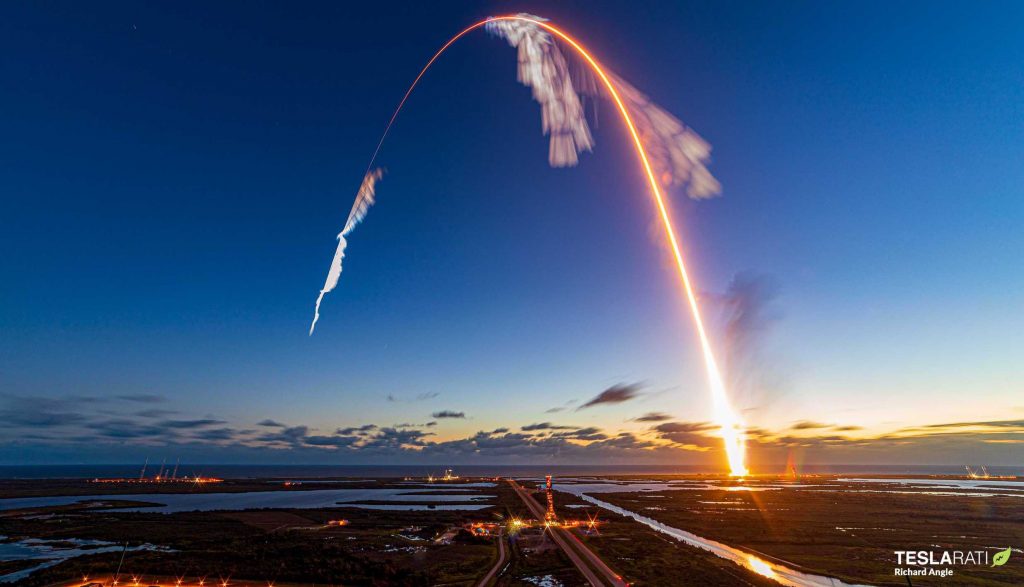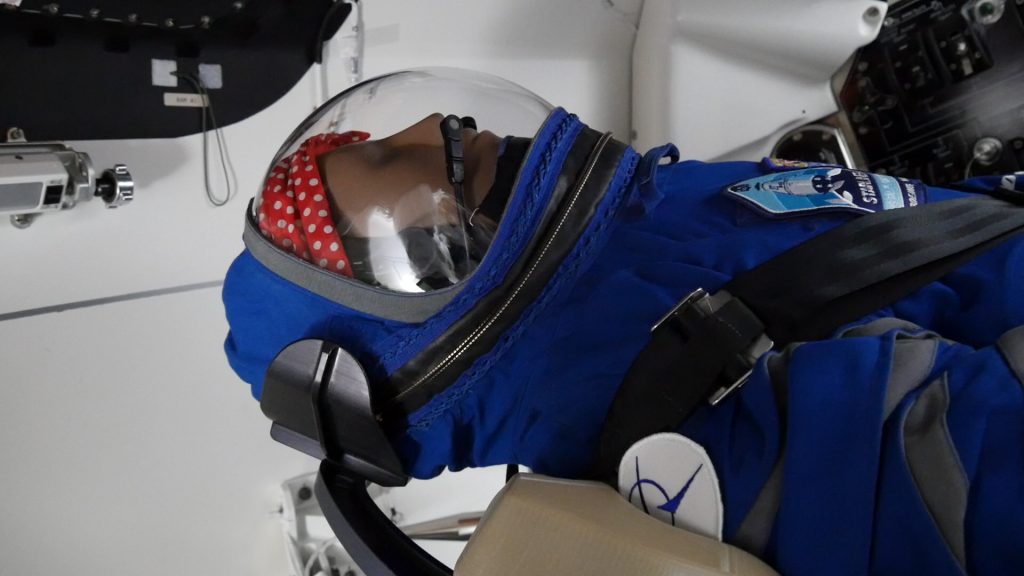

News
Boeing, NASA attempt Starliner landing after missing intended orbit
During the early morning hours of Friday, December 20th, at Space Launch Complex – 41 at Cape Canaveral Air Force Station United Launch Alliance successfully launched a uniquely configured, rated for human spaceflight Atlas V rocket topped with the Boeing Starliner crew capsule to complete its inaugural Orbital Flight Test to the International Space Station (ISS).
However, following the stunning sunrise launch and successful spacecraft separation, Starliner experienced an anomaly with an automated mission event timer which hindered a crucial orbital insertion burn from being completed.

The missed burn and the resulting domino effect of consequences cut Starliner’s journey short. In a joint media teleconference held Saturday, December 21st including NASA Administrator Jim Bridenstine, Boeing senior vice president of Space and Launch Jim Chilton, and deputy manager of NASA Commercial Crew Steve Stich, it was confirmed that just 48 hours following launch Starliner is expected conclude the test flight and return for a controlled landing at White Sands Missile Range in New Mexico.
Initially, Starliner was expected to spend approximately 8 days docked on orbit with the ISS for a return journey tentatively scheduled to occur on December 28th. The lack of orbital insertion and consequential overuse of fuel consumed by smaller incremental burns performed throughout the day on Friday to place Starliner in a safe orbit all but guaranteed that the spacecraft would miss its opportunity to rendezvous and autonomously dock with the ISS, a pivotal objective of the orbital test flight. A fact that was later confirmed on Twitter by Bridenstine.
During the teleconference, Starliner was described as a healthy spacecraft that had in fact achieved circular safe orbit approximately 250km above sea level, lower than would have been achieved had the initial burn occurred as planned. As docking with the ISS was completely out of reach and Starliner remained under tight constraints of how long it could maintain free orbital flight, Boeing and NASA teams jointly decided to bring Starliner home as soon as possible.
While Starliner remained on orbit Friday and Saturday, flight controllers completed many OFT mission objectives. A number of the achievements were outlined in a statement posted to Boeing’s Starliner updates webpage.

“Entry, descent, and landing is not for the faint of heart.” – Jim Chilton
While many OFT mission objectives were successfully met during the dramatically cut short mission the entire goal of Starliner still remains. After all, Starliner is designed to ferry human astronauts safely to and from the ISS. A huge part of that is re-entering the Earth’s atmosphere and landing under survivable conditions.
Enough of Starliner’s fuel was preserved to afford multiple opportunities to safely land. Two opportunities to land at the planned site of White Sands Space Harbor on the White Sands Missile Range in New Mexico. This location may sound familiar as it is the same location where a different Starliner test capsule recently completed a pad abort test.
NASA and Boeing teams are targeting a landing attempt on Sunday 7:57 am EST (1257 GMT). Should it be needed a backup landing attempt at 3:48 pm EST (848 GMT) in the same location is also available. An anthropomorphic test dummy dressed in Boeing’s recognizable blue spacesuit inside the capsule nicknamed “Rosie the Rocketeer” is wired up with sensors to collect data reflecting the conditions a human astronaut would experience during descent.

NASA will livestream the landing attempt and recovery efforts on NASATV beginning at 5:45 am EST (1045 GMT).
Check out Teslarati’s newsletters for prompt updates, on-the-ground perspectives, and unique glimpses of SpaceX’s rocket launch and recovery processes.

News
Tesla Semi program Director teases major improvements

Tesla Semi Program Director Dan Priestly teased the major improvements to the all-electric Class 8 truck on Thursday night, following the company’s decision to overhaul the design earlier this year.
Priestley said he drove the Semi on Thursday, and the improvements appear to be welcomed by one of the minds behind the project. “Our customers are going to love it,” he concluded.
Just drove the redesigned Semi. Our customers are going to love it. https://t.co/KZ88sf1CDL
— Dan Priestley (@danWpriestley) December 19, 2025
The small detail does not seem like much, but it is coming from someone who has been involved in the development of the truck from A to Z. Priestley has been involved in the Semi program since November 2015 and has slowly worked his way through the ranks, and currently stands as the Director of the program.
Tesla Semi undergoes major redesign as dedicated factory preps for deliveries
Tesla made some major changes to the Semi design as it announced at the 2025 Annual Shareholder Meeting that it changed the look and design to welcome improvements in efficiency.
Initially, Tesla adopted the blade-like light bar for the Semi, similar to the one that is present on the Model Y Premium and the Cybertruck.
Additionally, there are some slight aesthetic changes to help with efficiency, including a redesigned bumper with improved aero channels, a smaller wraparound windshield, and a smoother roofline for better aero performance.
All of these changes came as the company’s Semi Factory, which is located on Gigafactory Nevada’s property, was finishing up construction in preparation for initial production phases, as Tesla is planning to ramp up manufacturing next year. CEO Elon Musk has said the Semi has attracted “ridiculous demand.”
The Semi has already gathered many large companies that have signed up to buy units, including Frito-Lay and PepsiCo., which have been helping Tesla test the vehicle in a pilot program to test range, efficiency, and other important metrics that will be a major selling point.
Tesla will be the Semi’s first user, though, and the truck will help solve some of the company’s logistics needs in the coming years.
News
Tesla dominates in the UK with Model Y and Model 3 leading the way

Tesla is dominating in the United Kingdom so far through 2025, and with about two weeks left in the year, the Model Y and Model 3 are leading the way.
The Model Y and Model 3 are the two best-selling electric vehicles in the United Kingdom, which is comprised of England, Scotland, Wales, and Northern Ireland, and it’s not particularly close.
According to data gathered by EU-EVs, the Model Y is sitting at 18,890 units for the year, while the Model 3 is slightly behind with 16,361 sales for the year so far.
The next best-selling EV is the Audi Q4 e-tron at 10,287 units, lagging significantly behind but ahead of other models like the BMW i4 and the Audi Q6 e-tron.
GOOD NEWS 🇬🇧 Tesla is absolutely crushing the UK electric vehicle market in 2025 💥
The numbers are in, and the dominance is clear. With an impressive amount of 42,270 vehicles delivered year-to-date, the brand now commands a solid 9.6% market share of the total auto market 🆒… pic.twitter.com/dkiGX9kzd0
— Ming (@tslaming) December 18, 2025
The Model Y has tasted significant success in the global market, but it has dominated in large markets like Europe and the United States.
For years, it’s been a car that has fit the bill of exactly what consumers need: a perfect combination of luxury, space, and sustainability.
Both vehicles are going to see decreases in sales compared to 2024; the Model Y was the best-selling car last year, but it sold 32,610 units in the UK. Meanwhile, the Model 3 had reached 17,272 units, which will keep it right on par with last year.
Tesla sold 50,090 units in the market last year, and it’s about 8,000 units shy of last year’s pace. It also had a stronger market share last year with 13.2 percent of the sales in the market. With two weeks left in 2025, Tesla has a 9.6 percent market share, leading Volkswagen with 8 percent.
The company likely felt some impact from CEO Elon Musk’s involvement with the Trump administration and, more specifically, his role with DOGE. However, it is worth mentioning that some months saw stronger consumer demand than others. For example, sales were up over 20 percent in February. A 14 percent increase followed this in June.
News
Tesla Insurance officially expands to new U.S. state
Tesla’s in-house Insurance program first launched back in late 2019, offering a new way to insure the vehicles that was potentially less expensive and could alleviate a lot of the issues people had with claims, as the company could assess and repair the damage itself.

Tesla Insurance has officially expanded to a new U.S. state, its thirteenth since its launch in 2019.
Tesla has confirmed that its in-house Insurance program has officially made its way to Florida, just two months after the company filed to update its Private Passenger Auto program in the state. It had tried to offer its insurance program to drivers in the state back in 2022, but its launch did not happen.
Instead, Tesla refiled the paperwork back in mid-October, which essentially was the move toward initiating the offering this month.
BREAKING: Tesla Insurance has just officially launched in Florida.
This is the first new state to receive @Tesla Insurance in more than 3 years. In total, Tesla insurance is now available in 13 U.S. states (map in thread below of all the states).
Tesla Insurance in Florida uses… pic.twitter.com/bDwh1IV6gD
— Sawyer Merritt (@SawyerMerritt) December 17, 2025
Tesla’s in-house Insurance program first launched back in late 2019, offering a new way to insure the vehicles that was potentially less expensive and could alleviate a lot of the issues people had with claims, as the company could assess and repair the damage itself.
It has expanded to new states since 2019, but Florida presents a particularly interesting challenge for Tesla, as the company’s entry into the state is particularly noteworthy given its unique insurance landscape, characterized by high premiums due to frequent natural disasters, dense traffic, and a no-fault system.
Annual average premiums for Florida drivers hover around $4,000 per year, well above the national average. Tesla’s insurance program could disrupt this, especially for EV enthusiasts. The state’s growing EV adoption, fueled by incentives and infrastructure development, aligns perfectly with Tesla’s ecosystem.
Moreover, there are more ways to have cars repaired, and features like comprehensive coverage for battery damage and roadside assistance tailored to EVs address those common painpoints that owners have.
However, there are some challenges that still remain. Florida’s susceptibility to hurricanes raises questions about how Tesla will handle claims during disasters.
Looking ahead, Tesla’s expansion of its insurance program signals the company’s ambition to continue vertically integrating its services, including coverage of its vehicles. Reducing dependency on third-party insurers only makes things simpler for the company’s automotive division, as well as for its customers.








